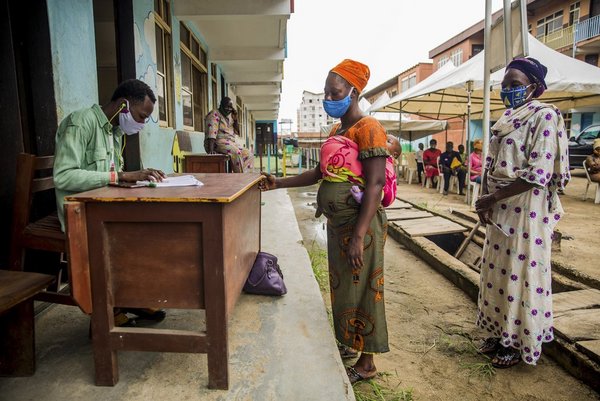 Read this article in French
Read this article in French- Share this article
- Subscribe to our newsletter
Acute risk of famine in four hotspots
Four countries contain areas that could soon slip into famine if conditions there undergo “any further deterioration over the coming months”, the World Food Programme (WFP) and the Food and Agriculture Organization of the United Nations (FAO) warn in November 2020. These countries are Burkina Faso in West Africa’s Sahel region, north-eastern Nigeria, South Sudan and Yemen.
The report The Early Warning Analysis of Acute Food Insecurity Hotspots by WFP and FAO describes a toxic combination of conflict, economic decline, climate extremes and the COVID-19 pandemic that is driving people further into the emergency phase of food insecurity.
Parts of the population in the four hotspots of highest concern are already experiencing a critical hunger situation. Escalations in conflict as well as a further reduction in humanitarian access could lead to a risk of famine, the report warns.
Acute food insecurity levels are reaching new highs
But these four countries are far from being the only red flag on a world map that shows that acute food insecurity levels are reaching new highs globally, driven by a combination of factors, the report notes. Another 16 countries are at high risk of rising levels of acute hunger.
How the situation evolves in the highest-risk countries will depend on conflict dynamics, food prices, the myriad impacts of the COVID-19 pandemic on their food systems, rainfall and harvest outcomes, humanitarian access, and the readiness of donors to continue funding humanitarian operations.
The joint report points to a total of 20 countries and contexts that are at “further risk of deterioration of acute food insecurity”, with key drivers of hunger including expansion and intensification of violence, economic crises exacerbated by the COVID-19 socioeconomic impact, weather extremes, transboundary threats like the desert locust and a lack of humanitarian access.
DRC faces the highest number of acutely food insecure people ever seen in a single country
It notes that in the Democratic Republic of the Congo there are 22 million people now estimated to be acutely food insecure - the highest number ever registered for a single country. Burkina Faso has registered the biggest increase with the numbers of desperately hungry people almost tripling compared to 2019, driven by increasing conflict, displacement and COVID-related impacts on employment and food access.
The situation is also dire in Yemen, where the existing food insecurity combined with conflict and a deepening economic crisis could lead to a further deterioration of an already critical food security situation.
Catastrophe/famine is the most severe of five phases used by the Integrated Phase Classification (IPC) system to chart escalating degrees of food insecurity. When this extreme phase is declared, it means that people have already started dying from starvation. The Hotspots report is saying that unless urgent action is now taken, the world could experience its first outbreak of famine since it was last declared in 2017 in parts of South Sudan.
(WFP/FAO/ile)
Read more at WFP website


